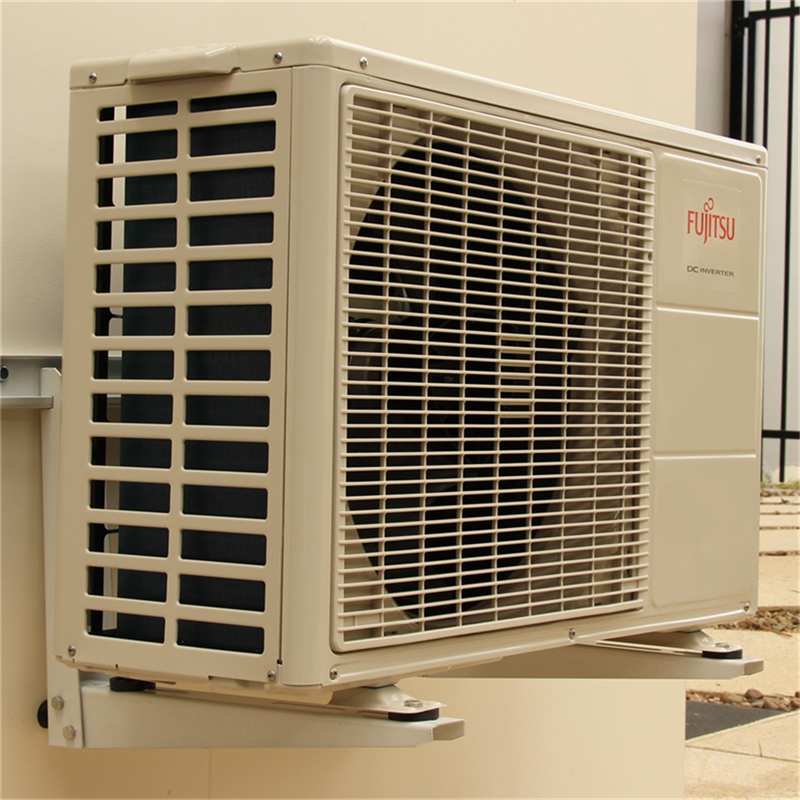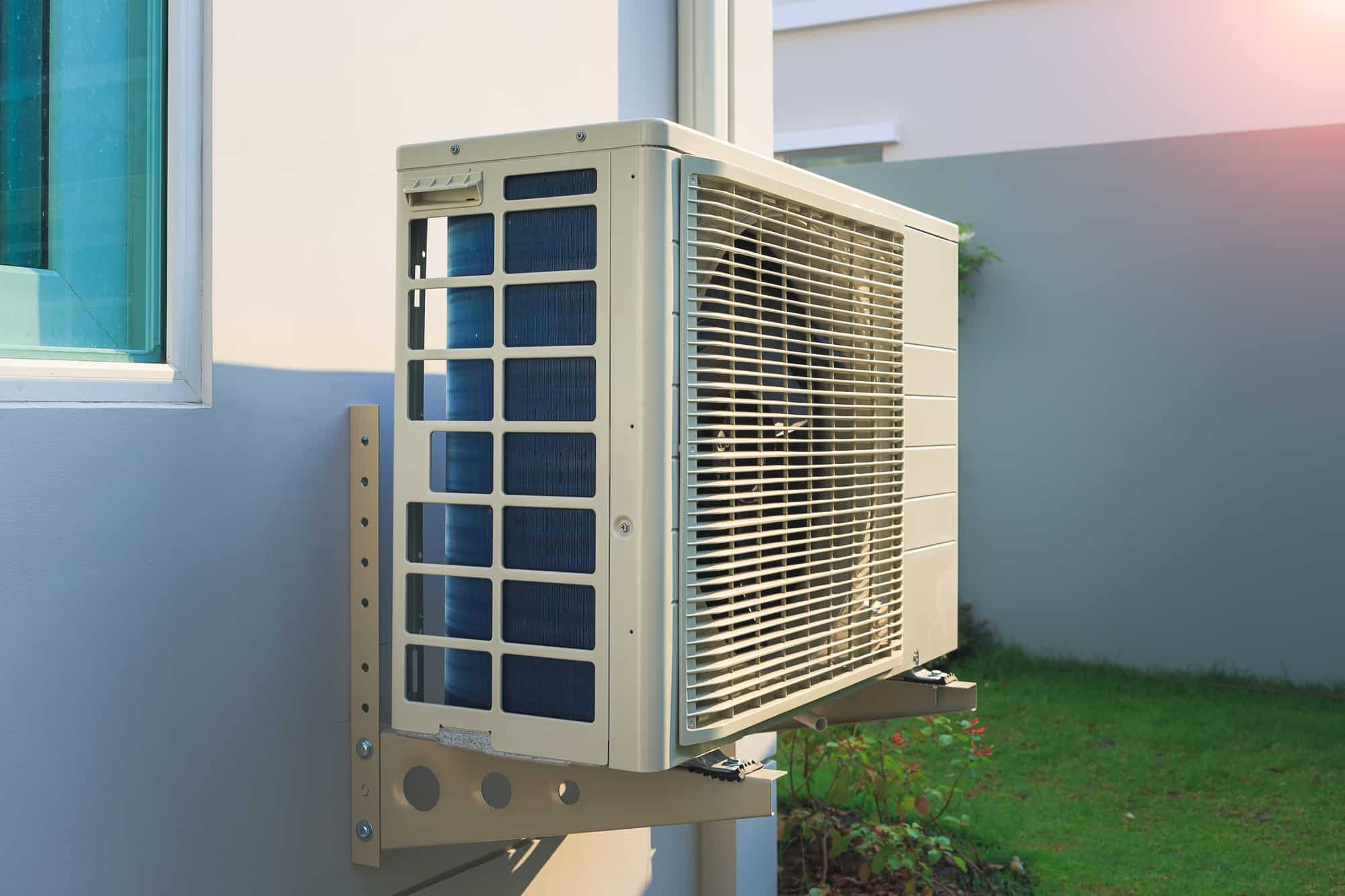Delving into the realm of Exterior Wall-Mounted AC Units for Small Homes, this article aims to provide a comprehensive guide on selecting the perfect unit to keep your small space cool and comfortable.
The subsequent paragraphs will cover essential information regarding the size, capacity, installation process, maintenance tips, and more for these units.
Overview of Exterior Wall-Mounted AC Units for Small Homes

Exterior wall-mounted AC units for small homes are typically compact in size and have a lower cooling capacity compared to central air conditioning systems. These units are designed to efficiently cool smaller spaces, making them ideal for apartments or small houses.
One of the key benefits of using wall-mounted AC units in small homes is their space-saving design. Since they are installed on the exterior wall of the home, they do not take up valuable floor space or block windows like traditional window units.
This can be especially advantageous for homes with limited square footage.
Installation and Efficiency
When it comes to installation, wall-mounted AC units are easier to install compared to window units. They require a small hole to be drilled through the wall for the refrigerant lines and electrical connections, which is a less invasive process than mounting a window unit.
- Wall-mounted AC units are also more energy-efficient than window units since they do not have the air leakage issues commonly associated with window installations. This helps to maintain a more consistent indoor temperature and can result in lower energy bills.
- Additionally, wall-mounted units are often equipped with advanced features such as programmable thermostats and energy-saving modes, further enhancing their efficiency.
- These units are also quieter than window units since the compressor and fan are located outside the home, reducing noise levels inside.
Factors to Consider When Choosing an Exterior Wall-Mounted AC Unit
When selecting an exterior wall-mounted AC unit for a small home, there are several crucial factors to take into account to ensure optimal performance and efficiency.
Size and Capacity
One of the most important factors to consider is the size and cooling capacity of the AC unit. It is essential to choose a unit that matches the square footage of your home. An undersized unit will struggle to cool the space efficiently, while an oversized unit may lead to excessive energy consumption and higher electricity bills.
Energy Efficiency
Opting for an energy-efficient AC unit can help you save on energy costs in the long run. Look for units with high SEER (Seasonal Energy Efficiency Ratio) ratings, which indicate greater energy efficiency. Investing in an energy-efficient unit not only benefits your wallet but also the environment.
Noise Levels
Consider the noise levels of the AC unit, especially if it will be installed near living spaces or bedrooms. Look for units with lower decibel ratings for quieter operation, ensuring a comfortable living environment without disruptive noise pollution.
Installation Location
The location of installation can significantly impact the performance of the AC unit. Ensure that the unit is placed in a shaded area to prevent direct exposure to sunlight, which can decrease its efficiency. Additionally, proper airflow around the unit is crucial for optimal operation and cooling performance.
Installation Process of Exterior Wall-Mounted AC Units

When it comes to installing an exterior wall-mounted AC unit on a small home, there are specific steps to follow to ensure a secure and efficient installation process. Additionally, having the right tools and equipment is crucial for completing the installation correctly.
Steps for Installing Exterior Wall-Mounted AC Units:
- Choose the location: Select a suitable spot on the exterior wall of your home where the unit will be installed. Make sure there is enough space and proper support for the unit.
- Prepare the wall: Clean the area where the unit will be mounted and ensure it is flat and free of any obstructions. Mark the Artikel of the unit for reference.
- Install the mounting bracket: Securely attach the mounting bracket to the wall using appropriate screws and anchors. Make sure it is level and can support the weight of the AC unit.
- Mount the AC unit: Lift the AC unit onto the mounting bracket and secure it in place according to the manufacturer's instructions. Double-check for stability and proper alignment.
- Connect the unit: Follow the provided instructions to connect the AC unit to the power source and any necessary piping for proper functioning.
- Test the unit: Turn on the AC unit to ensure it is working correctly and cooling the space effectively. Make any adjustments as needed.
Tools and Equipment Needed for Installation:
- Drill with appropriate drill bits
- Screwdriver or impact driver
- Level
- Tape measure
- Anchors and screws
- Wrench or pliers
Tips for a Secure and Efficient Installation:
- Follow the manufacturer's instructions carefully to ensure proper installation.
- Use a stud finder to locate wall studs for secure mounting.
- Consider hiring a professional if you are unsure about the installation process.
- Regularly maintain and clean the AC unit to prolong its lifespan and ensure efficient operation.
Maintenance Tips for Exterior Wall-Mounted AC Units

Regular maintenance of exterior wall-mounted AC units is crucial to ensure they operate efficiently and effectively. By following some simple maintenance tips, you can prolong the lifespan of your unit and avoid costly repairs. Here are some key steps to keep your AC unit in top condition:
Cleaning the Filters
One of the most important maintenance tasks is cleaning or replacing the filters regularly. Clogged filters can restrict airflow and reduce the unit's efficiency. Remove the filters, clean them with water and mild detergent, let them dry completely, and then reinsert them back into the unit.
Cleaning the Coils
Over time, the evaporator and condenser coils can accumulate dirt and debris, hindering heat transfer. Use a soft brush or vacuum cleaner to gently clean the coils. Be careful not to bend the fins while cleaning to maintain optimal airflow.
Inspecting the Drainage System
Ensure that the drainage system is clear of any blockages to prevent water leakage or mold growth. Check the drain channels and pan for any buildup and remove it using a mixture of water and bleach.
Checking for Refrigerant Leaks
Inspect the refrigerant lines for any leaks, as low refrigerant levels can affect the unit's cooling capacity. If you notice a leak, contact a professional HVAC technician to repair it and recharge the system.
Troubleshooting Common Issues
If your exterior wall-mounted AC unit is not cooling properly or making strange noises, it may indicate underlying issues. Check the thermostat settings, inspect the electrical connections, and ensure the unit is level on the wall. If problems persist, seek assistance from a professional technician.
Concluding Remarks
Wrapping up our discussion on Exterior Wall-Mounted AC Units for Small Homes, it's evident that these units offer a practical cooling solution for compact living spaces. Make an informed choice and enjoy a breezy ambiance all year round.
Query Resolution
What is the typical size and capacity of exterior wall-mounted AC units for small homes?
Exterior wall-mounted AC units for small homes usually range in size from 6,000 to 12,000 BTUs, suitable for cooling spaces up to 400-700 square feet.
How do exterior wall-mounted AC units compare to traditional window units in terms of installation and efficiency?
Wall-mounted AC units are easier to install than window units since they don't require a window opening. They also tend to be more energy-efficient and provide better air circulation.
What factors should be considered when choosing an exterior wall-mounted AC unit?
Consider factors such as size, capacity, energy efficiency, noise levels, and cooling capacity suitable for your home's size. Installation location also plays a crucial role in performance.
How important is regular maintenance for exterior wall-mounted AC units?
Regular maintenance is crucial to ensure optimal performance. Cleaning and servicing the unit regularly can prevent common issues and prolong its lifespan.
What are some common issues that may arise with wall-mounted AC units and how can they be troubleshooted?
Common issues include refrigerant leaks, sensor problems, or airflow obstructions. Troubleshoot by checking for leaks, recalibrating sensors, and ensuring proper airflow.







